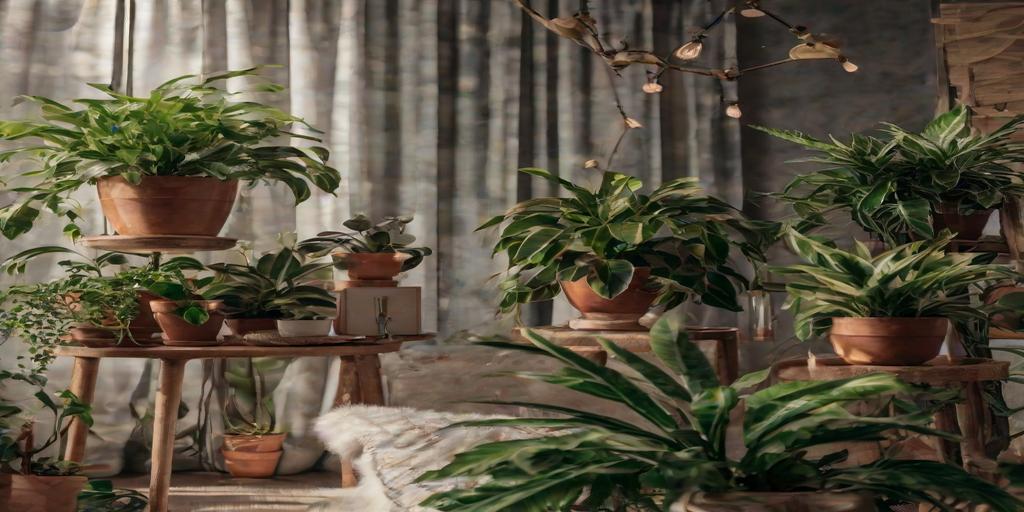
Modern Home Decor Ideas with Low Light Hanging Plants: Stylish & Easy Tips
Discover the best low light hanging plants for modern home decor! From stylish placement ideas to easy-care tips, transform your space with lush greenery—no sunlight needed.
Introduction
Did you know that indoor plants can boost mood and purify the air? Even if your home lacks natural light, you can still enjoy the beauty of hanging plants! Low light varieties like pothos, spider plants, and philodendrons thrive in dim corners, adding life to any room. In this guide, we’ll explore the best hanging plants for low light, creative decor ideas, and pro care tips to keep them thriving. Let’s bring nature indoors—effortlessly!
Best Low Light Hanging Plants for Modern Homes
Pothos (Devil’s Ivy)
If you’re new to indoor plants, Pothos is your best friend. It’s incredibly hardy, grows fast, and can thrive even if you forget to water it now and then. The heart-shaped leaves come in different shades—like golden, marble queen, or neon—so you can pick one that matches your decor. Plus, it trails beautifully, making it perfect for hanging baskets or high shelves.
Spider Plant
Spider plants are practically foolproof and have the added bonus of purifying the air. They produce long, arching leaves and tiny “pups” (baby spider plants) that dangle from the mother plant—super cute and easy to propagate. They adapt well to low light, though they’ll grow faster in bright, indirect light.
Philodendron Heartleaf
With its elegant, trailing vines, the heartleaf philodendron is a classic choice for hanging planters. It’s low-maintenance and forgiving, making it great for beginners. The deep green, heart-shaped leaves add a lush, tropical feel to any space. You can let it cascade down from a shelf or train it to climb a small trellis for variety.
Peperomia
If you’re tight on space, Peperomia is a fantastic compact option. Its thick, waxy leaves come in various colors and textures—some are deep green, while others have red undersides or ripple-like patterns. They don’t need much light or water, making them ideal for dim corners or small apartments.
ZZ Plant
The ZZ plant is practically indestructible. Its glossy, dark green leaves can survive in near-darkness and infrequent watering. While it doesn’t trail like Pothos or Philodendron, it looks stunning in a hanging pot when placed at eye level. Just be sure not to overwater—this plant thrives on neglect!
Creative Ways to Hang Plants in Low Light Spaces
Macramé Hangers
Macramé hangers add a boho-chic vibe to any room. They’re perfect for draping Pothos or Spider Plants near a window or in a dim corner. The woven texture contrasts beautifully with greenery, and they come in various lengths to create a layered look.
Wall-Mounted Planters
Short on floor space? Wall-mounted planters are a sleek solution. You can arrange them in a grid for a modern look or stagger them for a more organic feel. Plants like Peperomia or small Philodendrons work well here, adding life to blank walls without needing much light.
Ceiling Hooks & Brackets
Elevate your plants (literally) with ceiling hooks or brackets. This works especially well in rooms with limited natural light—hang them near a window or even in a dark corner where floor plants might struggle. Trailing plants like Devil’s Ivy or String of Pearls (if you have a bit more light) look amazing when suspended from above.
Floating Shelves
Layering plants on floating shelves creates a lush, cascading effect. Place a mix of trailing and upright plants at different heights for depth. For low-light spots, try ZZ Plants on the top shelf and Spider Plants or Philodendrons below so their vines can spill over.
Tiered Plant Stands
A tiered stand adds dimension to a room while maximizing greenery. Choose a stand with open shelves to allow light to filter through. Mix textures—like a ZZ Plant on the bottom, Peperomia in the middle, and a trailing Pothos on top—for a dynamic display.
Stylish Decor Tips for Low Light Hanging Plants
Mix Textures
Combine plants with different leaf shapes and sizes for visual interest. Pair a soft, feathery fern with the waxy leaves of a Peperomia or the bold foliage of a ZZ Plant. The contrast makes the arrangement more engaging, even in low light.
Use Neutral Pots
Stick to simple, neutral planters—white, black, or terracotta—to keep the focus on the plants. These colors blend seamlessly with modern decor and let the greenery stand out. For a bit of warmth, try textured pots like concrete or unglazed clay.
Layer Heights
Hang plants at varying levels to create depth. A tall ceiling hook with a long macramé hanger, a mid-level shelf with a trailing Philodendron, and a small tabletop ZZ Plant below make the space feel fuller and more intentional.
Pair with Lighting
If your space is especially dark, consider soft LED grow lights. They’re subtle and energy-efficient, providing just enough light to keep plants happy. Place them above or beside hanging plants to highlight their beauty while boosting growth.
Incorporate Natural Materials
Wood, rattan, and jute complement greenery beautifully. A wooden floating shelf, a rattan plant stand, or a jute-wrapped pot adds warmth and texture, making the plants feel like part of the decor rather than an afterthought.
Easy Care Guide for Low Light Hanging Plants
Watering Tips
Overwatering is the biggest killer of indoor plants. Let the soil dry slightly between waterings—stick your finger in about an inch deep; if it’s dry, it’s time to water. Most low-light plants (like ZZ or Pothos) prefer slightly dry soil to soggy roots.
Fertilizing
Since low-light plants grow slower, they don’t need much fertilizer. Use a diluted houseplant fertilizer every 4-6 weeks during spring and summer. Skip it in fall and winter when growth naturally slows.
Pruning & Maintenance
Trim yellow or dead leaves to keep plants healthy. Rotate them occasionally so all sides get even light (what little there is). For trailing plants, pinch back long vines to encourage bushier growth.
Pest Control
Low-light plants can attract pests like spider mites or mealybugs. Wipe leaves with a damp cloth or neem oil solution every few weeks to keep bugs at bay. Isolate any infested plants immediately.
When to Repot
If roots are poking out of the drainage holes or growth has stalled, it’s time to repot. Choose a pot one size larger with fresh soil, ideally in spring when plants are actively growing. Most low-light plants only need repotting every 1-2 years.
By following these tips, you can create a lush, stylish indoor jungle—even in the darkest corners of your home!
Conclusion
Low light hanging plants are a game-changer for modern home decor—bringing life, style, and cleaner air to any space. Whether you opt for a cascading pothos or a sculptural ZZ plant, these green beauties thrive with minimal effort. Ready to transform your home? Start with one or two plants and watch your space come alive!
